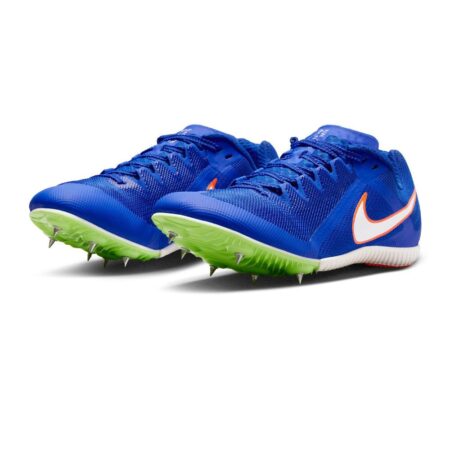In the late 19th and early 20th centuries, before baseball stadiums filled with cheering fans and football crowds roared in packed arenas, one of America’s earliest spectator sports drew large audiences and fierce competitors alike: professional walking. Once a dominant feature of the sporting landscape, pedestrianism-competitive racewalking-captivated the public’s imagination and became a major form of entertainment across the nation. An article published by Smithsonian Magazine delves into this fascinating chapter of American sports history, shedding light on how professional walking helped shape the country’s athletic culture long before the rise of today’s sporting giants.
The Rise of Professional Walking as a Popular American Sport
In the late 19th and early 20th centuries, professional walking captivated American audiences like few sports could. Far from the casual strolls we know today, these competitive pedestrian events were grueling tests of endurance and strategy. Athletes, often known as “pedestrians,” would traverse distances of up to 100 miles or more, sometimes over several days, drawing large crowds eager to witness human limits being pushed. Their feats were not only athletic achievements but social spectacles, complete with betting, cheering spectators, and media coverage rivaling modern professional sports.
Key elements that fueled the sport’s popularity included:
- Accessibility: Unlike sports requiring specialized equipment, walking was open to virtually anyone.
- Prize Money: Substantial winnings attracted both wealthy amateurs and seasoned professionals.
- Media Coverage: Newspapers eagerly reported on walking matches, helping cultivate celebrity athletes.
- Endurance Testing: The extreme distances and hours of walking challenged notions of human physical capability.
| Year | Event | Distance | Prize |
|---|---|---|---|
| 1879 | Six-Day Race (New York) | 500 miles | $1,500 |
| 1908 | Columbia Race | 100 miles | $5,000 |
| 1912 | World Pedestrian Championship | 50 miles | $3,000 |
Key Figures and Landmark Events That Shaped Early Spectator Walking
At the heart of early professional walking’s rise to fame were pioneering figures whose endurance and charisma drew massive crowds. One of the most influential was Edward Payson Weston, dubbed the “Pedestrian King,” whose monumental 1867 walk from Portland, Maine, to Chicago captivated the nation and established walking as a legitimate form of entertainment. Weston’s feats were often publicized with vivid newspaper coverage, turning him into a household name and inspiring a wave of competitive walkers eager to match – or surpass – his achievements.
Complementing these personalities were landmark events such as the famous 6-Day Races, which became cultural phenomena. These grueling contests tested not only stamina but strategy, as walkers accumulated mileage over nearly a week, often indoors on tracks or around velodromes. The spectacles drew diverse audiences and included grand prizes and lucrative betting pools, embedding professional walking deeply into the sporting landscape of the era.
| Event | Year | Notable Competitor | Distance/Duration |
|---|---|---|---|
| Western’s Chicago Walk | 1867 | Edward Payson Weston | 400 miles in 6 days |
| 6-Day Indoor Race | 1875 | Daniel O’Leary | 430 miles |
| International Long-Distance Walk | 1880 | Tommy Moore | 500 miles in 7 days |
- Edward Payson Weston: Catalyst and symbol of walking’s golden age
- 6-Day Races: The grueling contests that defined the sport
- Media Coverage: Newspapers that turned walkers into celebrities
- Betting Culture: Widespread wagering that boosted attendance and excitement
How Modern Audiences Can Rediscover and Celebrate the Legacy of Professional Walking
In an era where digital screens dominate, rekindling interest in professional walking offers a refreshing way for modern audiences to connect with a unique slice of American sports history. Communities can organize local “walking festivals” that blend athleticism with storytelling, bringing to life the riveting tales of 19th-century pedestrians who captivated crowds with their stamina and showmanship. Incorporating interactive exhibits and virtual reality experiences in museums or public spaces can deepen public appreciation, allowing visitors to witness the grit and determination that made professional walking a spectacle in its time.
Educational programs in schools and cultural institutions can also play a pivotal role. By highlighting the sport’s influence on contemporary fitness trends and its social significance-particularly as a pastime that transcended class boundaries-these programs can inspire new generations to value endurance, strategy, and perseverance. Below are some actionable ways to celebrate and preserve this legacy:
- Community Walkathons: Host events that pay homage to historic walking challenges.
- Storytelling Workshops: Share narratives of famous walkers through spoken word and performances.
- Walking Clubs: Foster local groups dedicated to the sport’s history and practice.
- Exhibit Collaborations: Partner with museums to showcase memorabilia and artifacts.
| Era | Key Figures | Notable Events |
|---|---|---|
| 1800s | Edward Payson Weston Daniel O’Leary |
New York to Chicago Race (1867) London’s 24-Hour Walk (1877) |
| Early 1900s | Tommy Mills George Wilson |
6-Day Race Revivals Transcontinental Challenges |
To Conclude
As professional walking events captivated early American audiences and laid the groundwork for modern spectator sports, they reveal a fascinating chapter in the nation’s athletic and cultural history. Revisiting this nearly forgotten pastime not only highlights the evolving nature of entertainment but also underscores how even the simplest feats of endurance once commanded widespread public attention. In tracing the rise and decline of professional walking, we gain a deeper understanding of America’s sporting heritage and the shifting tastes that continue to shape it.





